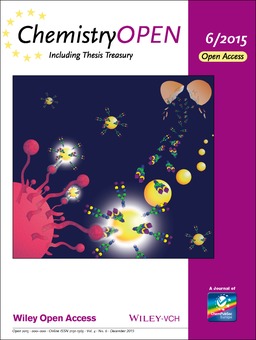Abstract
Invited for this month's cover picture is the group of Professor Antony Fairbanks and his collaborators at the University of Canterbury and University of Otago. The cover shows the isolation of complex bi‐antennary oligosaccharides from hens’ eggs and their conjugation to gold nanoparticles. Gold nanoparticles carrying these sugars can then bind to specific receptors (hemagglutinin) on the surface of the influenza virus, causing particle aggregation, which changes their spectroscopic properties. Upon aggregation, they undergo a red‐shift in their surface plasmon resonance, as illustrated by the bound particles shining in the cover image. These changes in spectroscopic properties are the basis of a detection system capable of detecting viral hemagglutinin at nanomolar concentrations, as well as the virus itself. For more details, see the Full Paper on p. 708 ff.Read the full text of the article at 10.1002/open.201500109
In one word, how would you describe your research?
 Sweet.
Sweet.
Who designed the cover? Where and when did she first gain experience in and learn to like computer art?
The cover was designed by Jesse Laurila, who is in the first year of his PhD in the Fairbanks group at the University of Canterbury. Jesse first became interested in computer art whist he was studying at Huitfeldska Gymnaset in Gothenburg, in his native Sweden.
What is the most significant result of this study?
That the sensor produced here is selective for human‐adapted strains of the influenza virus which selectively recognises glycans terminated in α(2–6)‐linked sialic acid residues, as opposed to Avian‐adapted strains which preferentially bind α(2–3)‐linked sialic acids.
How would you describe to the layperson the most significant result of this study?
That we can produce a selective detection system for particular strains of the flu virus simply by using carbohydrates isolated from the yolks of hens’ eggs.
How did each team member/collaborator contribute to the work?
The vast majority of work in the paper was performed by Vivek Poonthiyil. At the University of Canterbury, Professor Fairbanks supervised the carbohydrate aspects of the project, whist Dr. Golovko supervised the aspects related to gold nanoparticles. Vivek then travelled to the University of Otago to perform detection experiments on influenza strains under the supervision of Dr. Husain and with the technical assistance of Prashanth Nagesh.

V. Poonthiyil, P. T. Nagesh, M. Husain, V. B. Golovko, A. J. Fairbanks, ChemistryOpen 2015, 4, 662.
This article is part of the Virtual Special Issue “Carbohydrates in the 21st Century: Synthesis and Applications”.
Contributor Information
Dr. Vladimir B. Golovko, Email: antony.fairbanks@canterbury.ac.nz
Prof. Antony J. Fairbanks, Email: vladimir.golovko@canterbury.ac.nz.


